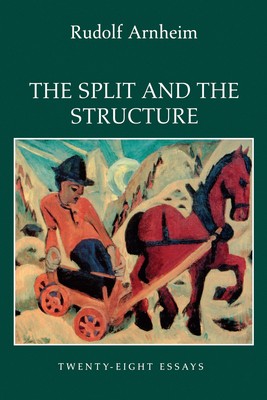
- We will send in 10–14 business days.
- Author: Rudolf Arnheim
- Publisher: University of California Press
- ISBN-10: 0520204786
- ISBN-13: 9780520204782
- Format: 16.3 x 23 x 3.7 cm, softcover
- Language: English
- SAVE -10% with code: EXTRA
Reviews
Description
Rudolf Arnheim's great forte is his ability to illuminate the perceptual processes that go into the making and reception of artworks-painting, sculpture, architecture, and film. Over the years, his pioneering mode of "reading" art from a unique scientific/philosophic perspective has garnered him an established and devoted audience. That audience will take pleasure in Arnheim's most recent collection of essays, one that covers a range of topics and includes titles such as "Outer Space and Inner Space," "What Is an Aesthetic Fact?," "As I Saw Children's Art," "Two Ways of Being Human," "Consciousness-an Island of Images," and "From Chaos to Wholeness."
The notion of structure is Arnheim's guide in these explorations. Most of the essays examine the nature of structure affirmatively: how it comes about, its incentives and objectives, its celebration of perfection. He is interested in how artists grope for structure to shape powerful, enlightening images, and how a scientist's search for truth is a search for structure.
Writing with enviable clarity, even when deploying complex arguments, Arnheim makes it easy and exciting to follow him as he thinks. America is not abundantly supplied with "public intellectuals" such as Rudolf Arnheim-to have his writings with us is cause for celebration.
"The word 'structure' appears for good reason in the title of this collection. . . . Structure seems to be needed as an arbiter wherever this civilization of ours is split by selfish interests and fighting for either/or decisions. The essays want to speak with the voice of reason, because they want to show how the parts require the whole."
EXTRA 10 % discount with code: EXTRA
The promotion ends in 19d.21:11:31
The discount code is valid when purchasing from 10 €. Discounts do not stack.
- Author: Rudolf Arnheim
- Publisher: University of California Press
- ISBN-10: 0520204786
- ISBN-13: 9780520204782
- Format: 16.3 x 23 x 3.7 cm, softcover
- Language: English English
Rudolf Arnheim's great forte is his ability to illuminate the perceptual processes that go into the making and reception of artworks-painting, sculpture, architecture, and film. Over the years, his pioneering mode of "reading" art from a unique scientific/philosophic perspective has garnered him an established and devoted audience. That audience will take pleasure in Arnheim's most recent collection of essays, one that covers a range of topics and includes titles such as "Outer Space and Inner Space," "What Is an Aesthetic Fact?," "As I Saw Children's Art," "Two Ways of Being Human," "Consciousness-an Island of Images," and "From Chaos to Wholeness."
The notion of structure is Arnheim's guide in these explorations. Most of the essays examine the nature of structure affirmatively: how it comes about, its incentives and objectives, its celebration of perfection. He is interested in how artists grope for structure to shape powerful, enlightening images, and how a scientist's search for truth is a search for structure.
Writing with enviable clarity, even when deploying complex arguments, Arnheim makes it easy and exciting to follow him as he thinks. America is not abundantly supplied with "public intellectuals" such as Rudolf Arnheim-to have his writings with us is cause for celebration.
"The word 'structure' appears for good reason in the title of this collection. . . . Structure seems to be needed as an arbiter wherever this civilization of ours is split by selfish interests and fighting for either/or decisions. The essays want to speak with the voice of reason, because they want to show how the parts require the whole."


Reviews